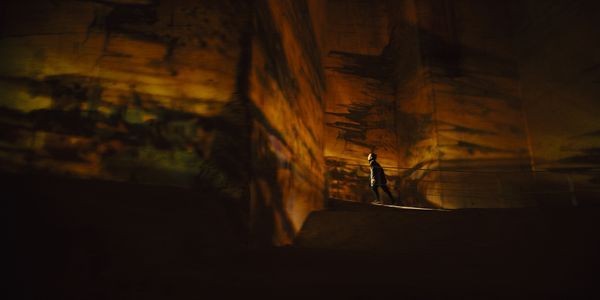Between his day job of making critically acclaimed films (Magnolia, There Will Be Blood, The Master), writer/director Paul Thomas Anderson has dabbled in the music video game since the start of his career. He’s shot bite size flicks for artists ranging from Fiona Apple to Joanna Newsom and Radiohead, like a novelist knocking out a short story just for kicks. But more recently he’s stepped it up a notch, directing videos like Radiohead’s ‘Daydreaming’ and HAIM’s ‘Valentine’ which straddle the line between short film and music video, screening them in cinemas in all their 35mm glory.
Now he’s gone further still, as Radiohead frontman Thom Yorke announced last week that Netflix would drop Anima, a ‘one-reeler’ short film directed by Anderson, to coincide with the release of his album of the same name. The result, an ostensibly dystopian dance piece, is a wordless science fiction ballet that breaks new ground for the director, if slightly less so for the musician.
A Dystopian Dance
We open on an underground subway train, populated by dozing commuters dressed in the same grayscale uniforms. Their sleeping positions ease into a synchronised, tightly choreographer shuffle, as their heads fall into their hands, somewhere between tiredness and despair, to the soundtrack of Yorke’s syncopated electronic beat. Yorke, who we know can dance, spots a fellow commuter and the briefcase she leaves behind, as the conforming commuters file out of the train and through the turnstile into their (presumably) equally confirming lives.

The first half of the film comprises his journey in search of this passenger, meeting a gravity-defying obstacle with automaton-like dancers on the way. This is the most cinematic stretch of the 15 minute running time, with bold, contrasting set design shot by a steady, confident camera combining with Yorke’s clever physical—and surprisingly funny—performance. He tries to journey on, attempting to continue his individual mission to find the Julia to his Winston, but the wind, the uniformed people—hell, even gravity—are against him.
So far, so seemingly textbook sci-fi. But just as you think its ambitions might be no higher than your standard uninspired Orwellian fare, it switches: the passenger returns and we turn to Yorke’s softer side. Anderson chucks the dystopia into the backseat and lets the human connection drive, the soundtrack of the tender electronica of ‘Dawn Chorus’ on the stereo. This is what they’re really interested in, both Anderson and Yorke: locating the real in the artifice, finding the meaning in the abstraction, discovering the animus to the anima and vice versa. The dystopia, like in all good sci-fi, is just a cover to talk about what’s really important: the here and now.
New Ground for Anderson
Shot on 65mm VistaVision by Iranian-French cinematographer Darius Khondji (The Lost City of Z, Ojka), this feels new for the Californian auteur. Screened in IMAX across the world on his birthday (26 June), this is a large scale, unashamed sci-fi PTA short film. Watch The Master not knowing who directed it and you’d never have guessed it was made by the same guy who directed Boogie Nights. Watch Anima not knowing who directed it and you’d never have guessed it was made by the same guy who directed The Master. This is Paul Thomas Anderson by way of Christopher Nolan, shot with some of the most uncomplicated (some would call it ‘mature’) camerawork of his career, letting the sets, the music and the choreography do the talking.
As a ‘one-reeler film by Paul Thomas Anderson to music by Thom Yorke’, and therefore with emphasis on the movie over the music, it might be harsh to judge Yorke on the three songs that comprises this original score. And yet, it’s Yorke’s deft acting ability that leaves a greater impression than the music. That said, Yorke’s layered work, not unlike the most recent offerings from Anderson (Phantom Thread, Inherent Vice), unspool themselves leisurely, requiring your time and attention to reveal their depths.
A collaboration tailormade for those who like their art served cult rather than mainstream, and potentially changing the way music videos are perceived, Anima visualises and synthesises Yorke’s perennial themes of the political and personal in an arresting, touching—and somewhat surprising—way.
What do you make of Anima? Might it represent the end of the traditional music video as we know it?
Anima is available to stream on Netflix from 27 June.
Does content like this matter to you?
Become a Member and support film journalism. Unlock access to all of Film Inquiry`s great articles. Join a community of like-minded readers who are passionate about cinema - get access to our private members Network, give back to independent filmmakers, and more.